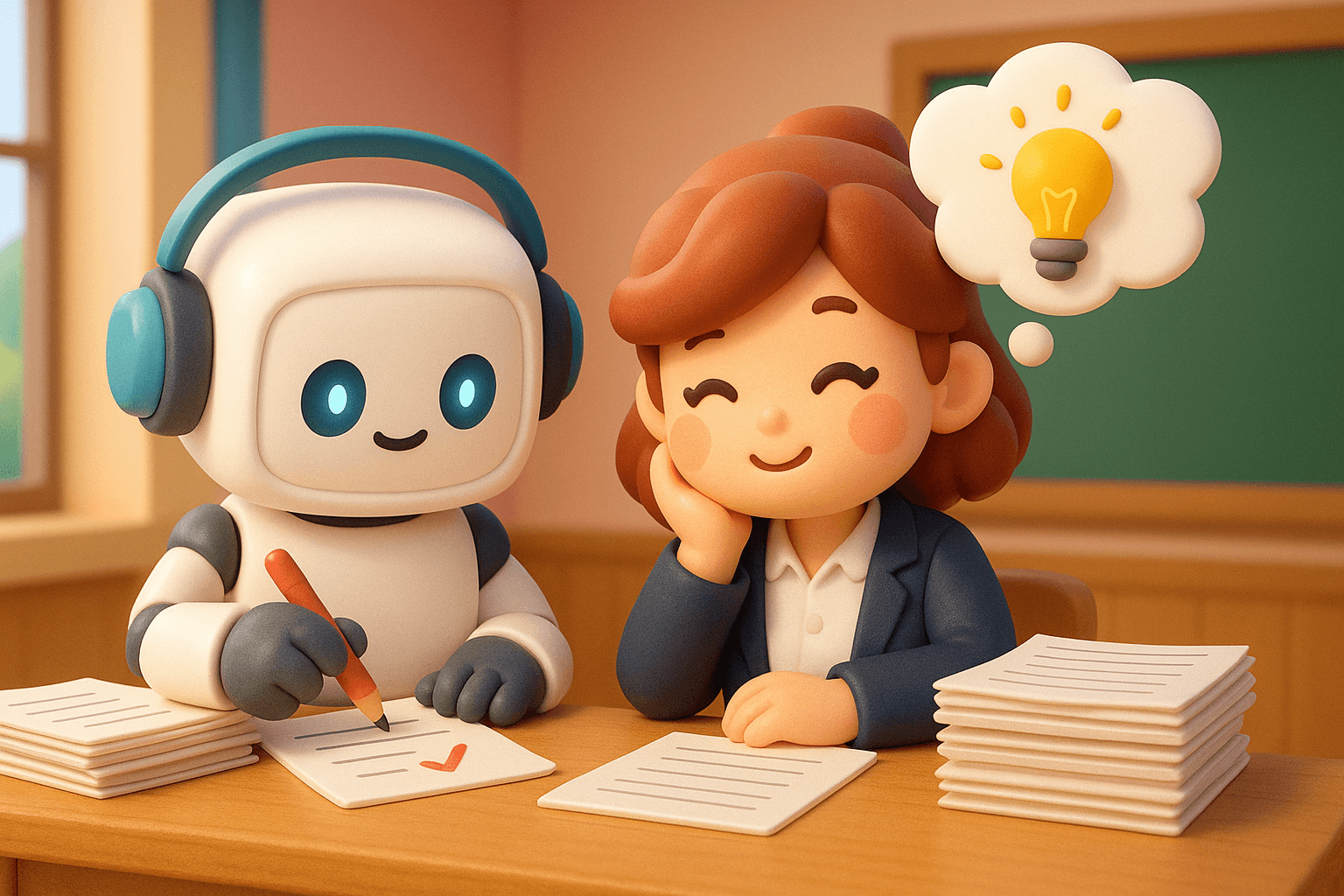Why Automarking Unlocks Different Thinking

Have you ever stopped to consider how deeply our marking schemes and methodology shape student learning? We've spent decades crafting assessments around human limitations, and it's time we acknowledged a striking reality: our traditional approach to marking might be stifling student creativity and problem-solving.
The Human Factor in Mark Schemes
For generations, we've written mark schemes with human markers in mind. It's a practical necessity—after all, teachers can only spend so much time on each paper. But this constraint has led us to create increasingly rigid assessment structures that might actually limit learning rather than enhance it.
Think about it: when was the last time you wrote a mark scheme that could recognise multiple valid approaches to the same problem? The reality is that we typically outline one or two 'model' solutions, not because they're the only correct methods, but because it's what human markers can reasonably handle within their time constraints.
This is even true of exam boards and centrally set exams: think about how much work and effort is set into building questions that are fair - but moreso, that are easily marked by a team of humans that need to work consistently and quickly. How often have you been exasperated by what is and what isn't in the exam board mandated mark scheme because it's missing the point of the assessment and is being rigid in even the exact wording they require to make valid points.
The Mathematics Conundrum
Mathematics presents a particularly telling example of this entire problem. Our current practice often involves marking the final answer and only delving into the working process when something goes wrong. What message does this send to our strongest students?
It essentially tells them: "Don't bother showing your thinking unless you're stuck." We've inadvertently created a system that encourages our most capable learners to skip the very process documentation that could deepen their understanding and help their peers learn from their approach.
In fact I vividly remember the slight buzz from the class when working through past paper answers to see that the workings were presented wrong in the examples given, because humans are optimising for speed of marking and not depth of feedback.
But what can we even do about that? How could you mark the process of every single student for every single question they've tried?
The Time Trap
Let's confront an uncomfortable truth about education: we've normalised a system where students largely assess their own learning progress simply because we lack the resources to do better. Think about it—how many exercises, practice problems, and homework assignments are marked by the students themselves or their peers?
Not because this is the best approach pedagogically, but because we simply don't have the capacity for expert assessment of every learning step.
This optimisation for time creates a troubling paradox: those who understand the least are often left to validate their own understanding. We're asking students who haven't yet mastered concepts to identify their own misconceptions. It's rather like asking someone who's learning a new language to proofread their own work—they simply don't have the knowledge base to spot their own errors.
The consequences of this approach are far-reaching. By the time expert assessment does occur—usually in formal testing situations—misconceptions have often become deeply embedded. Fundamental building blocks may be missing or misaligned, making it significantly more challenging to correct these issues later in the learning journey.
The Feedback Fallacy
Let's talk about feedback—real, meaningful feedback that actually helps students improve. Even in formal assessment situations, how effective is our current approach? A tick mark on ten minutes of work tells a student virtually nothing about how to refine their thinking or improve their approach - even if they were right in their final answer. A numerical score might indicate performance level, but it doesn't guide improvement, and if a student scores poorly it'll be an obvious thing for them to avoid psychologically.

Yes, we have tools to help—rubrics and formal mark schemes can provide structure to our feedback. But if we're honest with ourselves, most feedback still amounts to little more than highlighting where marks were gained or lost. We rarely have the capacity to help students truly understand where their thinking went awry or how to correct their approach.
Why does this matter? Because this is precisely what separates group instruction from one-to-one tutoring—the ability to provide immediate, specific, and actionable feedback. It's at the heart of Bloom's 2 sigma problem, which showed that students receiving one-to-one tutoring perform two standard deviations better than those in conventional classroom settings. The difference isn't just about individual attention; it's about the quality and immediacy of feedback that helps students correct their course before misconceptions become embedded.
Breaking Free from Limited Thinking
Here's where automarking changes everything. For the first time in educational history, we have the capability to assess unlimited approaches to a problem with consistent accuracy. This isn't just a technological advancement—it's an opportunity to fundamentally rethink how we design assessments.
Consider these possibilities:
- Marking schemes that recognise and reward multiple valid problem-solving approaches
- Real-time feedback on process, not just end results
- Assessment of creative solutions we hadn't even considered when writing the mark scheme
Does Automarking… work?
Mindjoy's AI automarking is easy to set up with a mark scheme, rubric or exemplar answer, works instantly, and gives students detailed feedback. Out of the box it works with typed, hand-written, photos and even diagrams; and the assessment and feedback happens automatically in the background.
It's consistent - more consistent than a human that has to mark 60 answers in test papers - and can do it in a fraction of the time.
So yes, it works. And it's quick. But what's stopping us using it for everything?

The Challenge of Change
The real challenge isn't technological—it's conceptual. We've become so accustomed to writing assessments within human constraints that we might not even recognise how these limitations have shaped our thinking about education itself.
We need to start asking ourselves some uncomfortable questions:
- How many valid approaches to problems have we inadvertently discouraged?
- What kinds of thinking have we failed to reward simply because they were too complex to assess efficiently?
- How might our students approach learning differently if they knew every step of their thinking process would be valued?
- How often have we not assessed something because it was "just an exercise" when we could have been using AI automarking to take the heavy lifting?
A New Framework for Assessment
Automarking doesn't just make marking more efficient—it allows us to reimagine what's possible in assessment. We can now design mark schemes that:
- Evaluate the elegance of solution processes, not just their accuracy
- Recognise innovative approaches that differ from standard methods
- Provide detailed feedback on thinking patterns, not just outcomes
Looking Forward
The shift to automarking represents more than just a technological advancement in education. It's an opportunity to break free from assessment constraints that we've internalised so deeply we barely notice them anymore.
As we move forward, we need to challenge our assumptions about what constitutes good assessment. Perhaps the most exciting aspect isn't the automation itself, but the way it frees us to think differently about how we evaluate learning.
The question isn't just how we can use automarking to do what we've always done more efficiently. Instead, we should be asking: How can we use this technology to assess learning in ways we never could before?

If you're getting excited about what automarking might unlock for you then why not take Mindjoy's Pathways for a whirl, generate a complete custom course using your existing material and AI in a little under 2-minutes, and try it with your students immediately!
